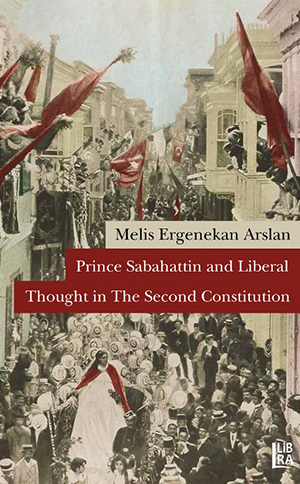
The milestone reforms of the Ottoman Empire are the Tanzimat, the First and Second Constitutions. The Tanzimat Charter made Ottomanism the dominant ideology, paved the way for secularisation and led to the cultivation of an illuminated youth idealizing the concepts of equal citizenship, freedom and constitution. Consequently, it both contributed to the intellectual accumulation of the Ottoman intelligentsia and formed the basis of their political opposition. The first intellectual opposition, Young Ottomans, were the pioneers of the process concluding with the declaration of Kanun-i Esasi. Young Turks' struggle for the restoration of the suspended constitution, resulted in the declaration of the Second Constitution in 1908. The main objective of Young Turks fighting against Abdülhamit's absolutism, was the reestablishment of the constitutional monarchy. Once this was achieved, former divisions reappeared within the movement. This time, other Young Turks began to oppose the vanguard of the revolution, the Committee of Union & Progress (CUP) which had now become the dominant and despotic power.
The most influential figure among the opponents was undoubtedly, Prince Sabahattin, the sultan's nephew and ardent opponent, who also inspired other CUP opponents. The aim of this study is to analyze Sabahattin, always a subject of political polarization in Turkish political literature, objectively, to determine the intellectual foundations of his opposition and to interrogate the scientific basis and applicability of the social reforms he defended. Other opponent parties discussed in connection with Sabahattin's views has helped us determine the liberal positioning in that period.
Künye
Kitabin Adi: |
Prince Sabahattin and Liberal Thoughts in The Second Constitution |
Yazan: |
|
Baski tarihi |
2015 |
Dizi Adı: |
History – 112 |
Baskı Adedi: |
100 |
Sayfa: |
208 |
Ebat: |
13.5 x 21 cm. |
Kagit: |
Enso 60gr. |
Kapak: |
Lom Tasarım Ofisi |
Cilt/Kapak: |
300 gr. Mat, Amerikan, 4 Renk |
ISBN/Barkod: |
978-605-9022-28-6 |
İçindekiler
I - THE BEGINNING OF MODERNIZATION: MODERNITY IDENTIFIED WITH THE WEST
Debates Over the Tanzi̇mat Period and Young Ottomans
The Attitude of the Elites Towards the West
The Perception of the Tanzimat Reforms by Young Turks
Towards the 1908 Revolution
The Opposition of Young Ottomans
Resistance to Despotism within the Despot's Own Family
II - OPPOSITION TO THE COMMITTEE OF UNION AND PROGRESS IN THE SECOND CONSTITUTIONAL ERA
Liberal Elements and Main Principles Advocated by the Opposition Against the Committee of Union and Progress
Freedom of Press
The Party-Committee Duality
Social or Political Aims?
Liberal Party (Ahrar Fırkası)
The 31 March Incident and Silencing the Opposition
Opposition Unites in the Freedom and Accord Party (Hürriyet ve İtilâf Fırkası)
III - THE PILLARS OF PRINCE SABAHATTIN'S OPPOSITION
Decentralization (Adem-İ Merkezi̇yet)
Evolution of the Land Regime and the Administrative System in the Ottoman Empire
Prince Sabahattin's Approach to the Administrative System (views about decentralization)
Private Enterprise (Şahsi̇ Teşebbüs)
What does Sabahattin mean by this concept?
Tax Rebellions in Anatolia
IV - INTELLECTUAL FOUNDATIONS OF SABAHATTIN'S IDEAS
The Impact of Edmond Demolins on Sabahatti̇n's Ideas
Education as the Basis of Social Reforms
Demolins' Types of Social Structure
The Thinkers Inspiring Prince Sabahattin Intellectually
Frédéric Le Play and School of Social Sciences
Evolutionary Positivism Shaping Sociological Thought in the Second Constitutional Era
Liberal or Conservative Approach?
CONCLUSION
BIBLIOGRAPHY
INDEX

